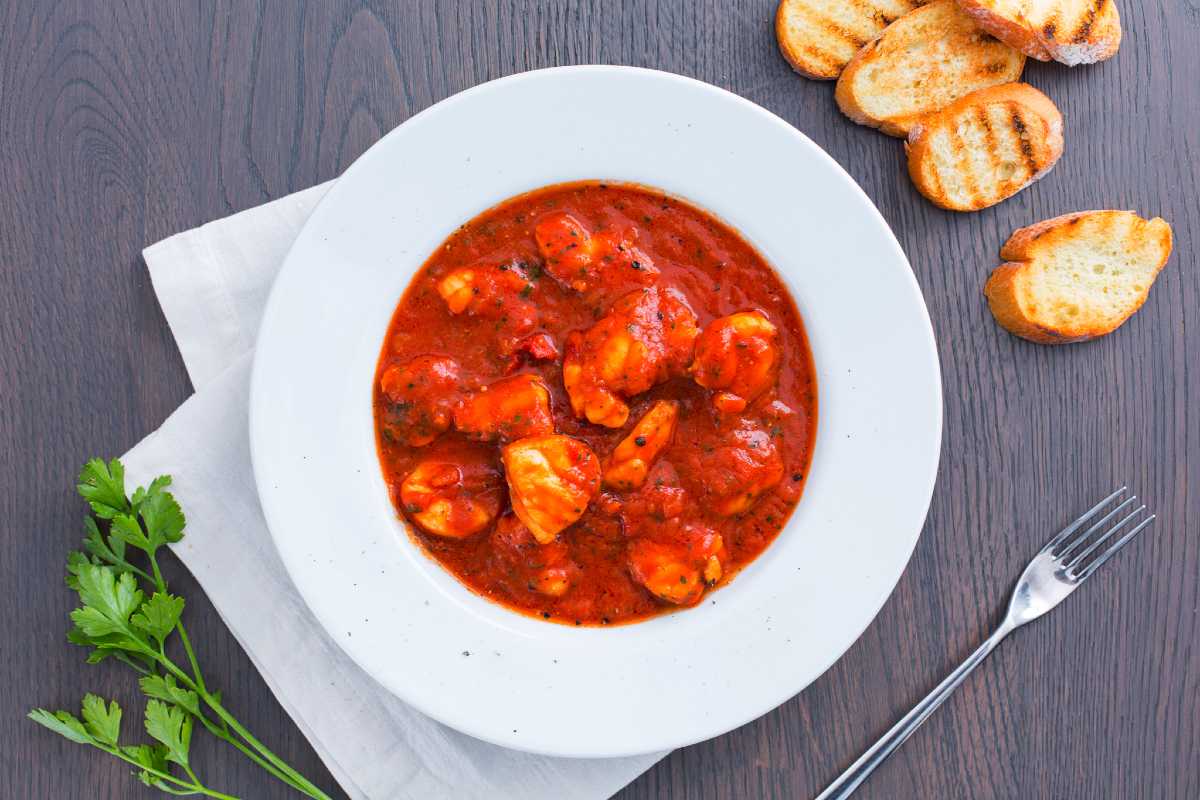Monkfish with potatoes
- Very easy
- 40 min
- Kcal 770

Monkfish stew, it's just one of those cozy dishes you'll find all along the Italian coast. Imagine fresh seafood and simple, home-style recipes—really part of everyday life there. Folks in seaside towns just love how the monkfish stew takes a basic fish and turns it into something tender and so, so tasty. Especially when it’s “in guazzetto” with a light tomato sauce that really, really lets the flavor shine. The monkfish, known as rana pescatrice or coda di rospo, is famous for its delicate and lean meat. It holds up well in the pot and soaks in all that saucy goodness. Seriously good. You get this moist texture with every bite. Pretty much makes it both hearty and a bit fancy—without being complicated, you know? In Liguria or along the Tyrrhenian coast, they might toss in some olives for an extra tangy twist. And you know what? The basic idea stays the same: keep it fresh, keep it simple, let the seafood do the talking.
In Italian kitchens, this monkfish stew recipe is a real go-to. Especially when you want something filling but not heavy. Served with a chunk of toasted bread—so good—to mop up every bit of that golden, tomatoey broth, it totally nails the comfort food vibe. It’s like the lighter cousin to classic Italian fish soup. Really, it's a bit easier and more straightforward. This easy monkfish stew is super flexible, like you’ll see people swapping out the monkfish for gallinella or even tossing in a handful of capers for an extra kick. That’s what makes these monkfish recipes so popular. There's room to play around, and every region adds its own touch. Whether you’re after a hearty seafood dish or just exploring new monkfish cooking methods, this stew checks all the boxes. It’s a tasty, relaxed meal that really brings out the best in coastal Italian food. You don’t have to fuss too much, and what you end up with is pure comfort in a bowl, capturing the core of Italy’s beautiful coastal cuisine. For sure.
You might also like:

To make the monkfish in broth, first start by preparing the sauce. Clean and chop the shallot 1. In a saucepan, pour the finely chopped shallot, oil, and garlic 2. Stew the shallot over low heat for about 5-6 minutes. Pour in the tomato sauce 3

add salt, and a pinch of baking soda to remove the acidity from the tomato 4. Lower the heat and let it cook for 25-30 minutes with the lid on 5. After 20 minutes, cut the monkfish in half 6

and remove the central bone 7. Remove any skin residues 8 and cut it into pieces of the same size, about an inch 9.

In another pan, pour a drizzle of oil and the garlic, heat over low heat to flavor 10. Remove the garlic 11 and place the monkfish bites 12.

Splash with white wine 13 and let it evaporate. Meanwhile, remove the garlic clove from the sauce 14 and add the fish 15.

Adjust with salt and pepper, cover with a lid 16 and let it cook for about 8-10 minutes. Garnish with finely chopped parsley 17. Serve the monkfish in broth hot with some toasted bread 18.